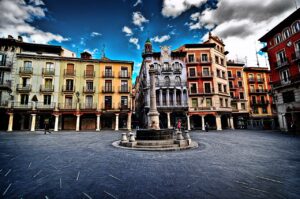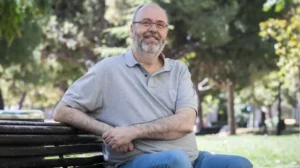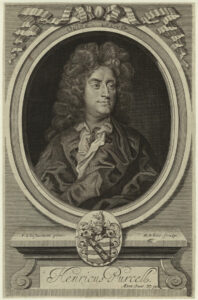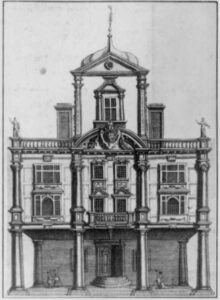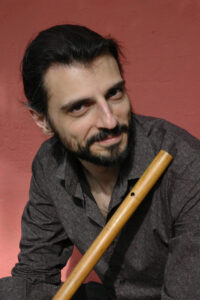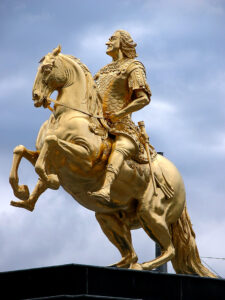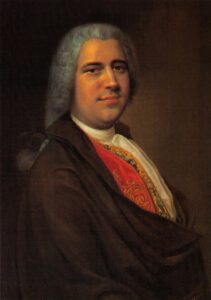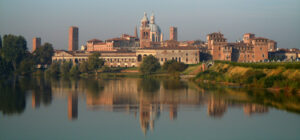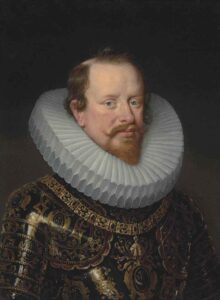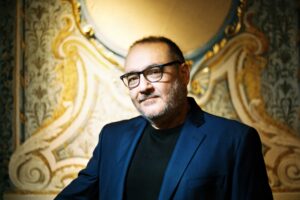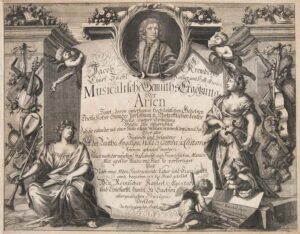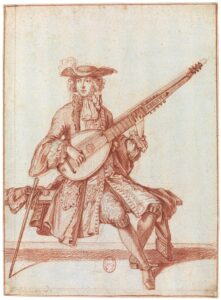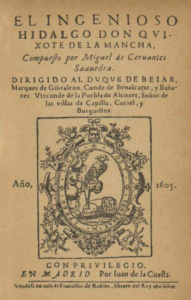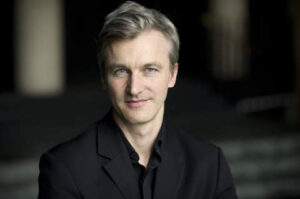May Janáček forgive me that once again I could go to Brno for just a few days of his Bienniale and, consequently, once again I faced the difficult decision what to choose from among the festival’s offerings. Two years ago I couldn’t help marvelling how so many musical events could be packed into the festival programme spread over less than three weeks. The organisers winked knowingly, said, “Hold our beer”, and extended this year’s Bienniale by six days, increasing the number of concerts and performances accordingly. And just in case – lest anyone think it’s a one-off excess, associated with the Year of Czech Music celebrations – they announced a tentative schedule for the next festival, which will last more than a month.
Janáček Brno 2024, with the motto “No limits!”, has just come to an end. As many as seven productions were presented in its main operatic strand: a new staging of The Excursions of Mr. Brouček directed by Robert Carsen, with the excellent Nicky Spence in the title role, co-produced with Teatro Real in Madrid and Berlin’s Staatsoper; two productions of The Cunning Little Vixen – one from Ostrava, the other from Brno, both to celebrate the centennial of the Brno premiere at the theatre now called Mahenovo divadlo; Věc Makropulos from Berlin’s Staatsoper (Claus Guth’s 2022 production); a staging of Jenůfa prepared especially for the festival in its original 1904 version, conducted by Anna Novotna Pešková and directed by Veronika Kos Loulová; as well as this year’s Brno production of Dvořák’s Rusalka, directed by David Radok, and the first Czech staging of The Charlatan, Pavel Haas’ only opera, since its 1938 premiere. The festival guests this year included two foreign orchestras, the Bamberger Symphoniker and the Staatskapelle Berlin, conducted during concerts at the Janáček Theatre by Jakub Hrůša, who is just finishing his tenure in Bamberg and next season will be taking over the musical direction of London’s Royal Opera House (he led the Berlin ensemble instead of Christian Thielemann, who had to cancel for health reasons). A novelty in the Bienniale programme came in the form of a series of recitals at Brno’s famous villas: the Art Nouveau Villa Löw-Beer and two icons of modernism, Villa Tugendhat and Villa Stiassni.
Like last year, I decided to organise my four-day stay in Brno around a forgotten opera, in this case Haas’ The Charlatan. Pavel Haas is an exceptionally tragic figure, even in comparison with other modernists whose work has been recently presented in the Czech Republic and Germany as part of the huge “Musica non grata” project, which restores the memory of artists eradicated from musical life after the Nazis’ rise to power. Born in 1899 in Brno, in a family of a Jewish shoemaker and owner of a thriving shoe workshop, Haas began his education with private piano lessons. At the age of fourteen he enrolled in the music school in the Besední dům and after the Great War continued his studies at the newly established Conservatoire. In 1920 he became a student at the master school of Leoš Janáček, who would have a huge influence on his later oeuvre, although, according to Haas, his pedagogical methods left much to be desired.
After completing his studies Haas became a partner in his father’s business, while pursuing a parallel career as a composer and critic. At that time he wrote a lot of music for the theatre and was increasingly toying with the idea of composing his own opera. The first attempts, for various reasons, failed (among the ideas that never materialised was The Dybbuk based on the dramatic legend by S. An-sky). Haas got a second wind only in the 1930s, having established his reputation as a composer of film music. This time his choice was Josef Winckler’s novel Doctor Eisenbart, published in 1929, about an itinerant Bavarian barber from the turn of the eighteenth century, a real-life figure who made a fortune from shows featuring cataract removal and setting of broken bones, staged with a large troupe of musicians, acrobats and mimes.
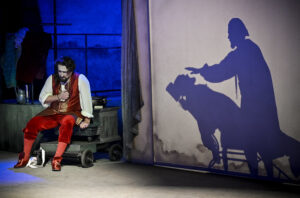
The Charlatan. Pavol Kubáň as Pustrpalk. Photo: Marek Olbrzymek
Seeking to have the novel adapted into a libretto, in 1933 Haas approached the author himself, who treated him kindly but with some reserve, aware of what cooperation with a Jewish composer could mean for both sides. Two years later, when the Nuremberg Race Laws came into force, Haas decided to cover up the source of his inspiration and draft the libretto himself, allegedly drawing on the medieval farce Mastičkář (Ointment Seller), from which he took the name of the main character, Pustrpalk. He set the action during the Thirty Years’ War and prudently removed all references to the German reality from the text.
He submitted the score of Šarlatán, completed in June 1937, to the management of the Zemské divadlo in Brno (another name for today’s Mahen Theatre), which staged the opera – with great success – the following April. And then everything began to crumble. In March 1939 the Third Reich seized Czechoslovakia. Two years later Haas found himself in the Terezin concentration camp. In October 1944 he was transferred to Auschwitz along with another transport of prisoners and died in the gas chamber the same day. The family learned about the story of his death from Karel Ančerl, who was miraculously escaped extermination. Yet the memory of Haas did not begin to be revived until the 1990s, after The Charlatan was staged at the Wexford Festival.
This year’s staging from the National Moravian-Silesian Theatre in Ostrava subtly draws on František Muzika’s 1938 sets and highlights all the best features of the directorial craft of Ondřej Havelka, who skilfully weaves his way between the Czech avant-garde and bourgeois theatre, expressionism and folk tradition. The simple, multifunctional sets (Jakub Kopecký) and colourful costumes, referring to various eras and conventions (Kateřina Štefková), effectively outline the space of the drama and emphasise the nature of individual characters. They are the material of vulgar gags, at times turning into an effective tool of illusion (evocative shadow play behind a wooden structure covered by a semi-transparent screen). Havelka masterfully juggles elements of plebeian theatre – with all its coarseness and exaggerated acting gestures. Acrobats doing somersaults, cloth entrails pulled from the bodies of the quack’s clients, two-legged horses without harnesses pulling an alcove transformed into a carriage – the dizzying pile-up of the absurd and the grotesque makes the tragedy of the finale, coming as suddenly as the Nazi darkness that was soon to envelop all of Europe, all the more powerful.
The Charlatan is an opera of crowds, a feature that was perfectly captured by Jakub Klecker, a conductor with vast choral experience, who was in charge of the musical side of things. He sensed the inherent theatricality of Haas’ score, composed – as in Janáček’s works – of short musical ideas combined into coherent, larger systems, rhythmically expressive, with a melody based largely on modal material. Particularly worthy of note in the large solo cast were Pavol Kubáň, singing the title role, an artist possessing a resonant baritone beautifully developed in the upper end of the scale; Soňa Godarská as Amarantha, a singer with excellent acting skills and a rather sharp sounding but very expressive mezzo-soprano; and the bass-baritone Josef Škarka as the wistful old man Pavučina. A separate round of applause should be given to the chorus of the Ostrava company, superbly prepared by Jurij Galatenko.
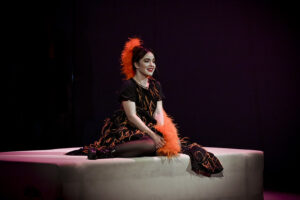
The Cunning Little Vixen. Doubravka Novotná in the title role. Photo: Marek Olbrzymek
The infectious enthusiasm of the Ostrava ensembles was also shared by the audience of The Cunning Little Vixen, under the baton of the young Prague conductor Marek Šedivý, who has held the musical directorship of the Moravian-Silesian Theatre for four seasons. The director of the new production is the Israeli-Dutch choreographer Itzik Galili, known for his witty and inventive, and yet compellingly lyrical, dance routines. His distinctive style – underpinned by Daniel Dvořák’s clear, very sparse sets and Simona Rybáková’s gorgeous costumes – worked well in Janáček’s “forest idyll”. Despite the addition of a dozen or so dancers to the cast, stage movement did not dominate the other elements of the production. On the contrary: in the almost empty space illuminated by soft light Galili created an even more emphatic illusion of the magical atmosphere of the forest. Nor did his concept hamper the singers, who clearly enjoyed entering the world of this dancing tale. It’s been a long time since heard such a fresh and sparkling interpretation of the title role – Doubravka Novotná is undoubtedly one of the most talented Czech sopranos of the younger generation, an artist who is versatile and, at the same time, has a rare ability to choose her repertoire wisely. I was a little bit disappointed by Martin Gurbal’ as the Forester. Either he was out of shape that day or his bass is not quite open enough at the top for this essentially baritone part. On the other hand the baritone Boris Prýgl was excellent in the bass role of Harašta. But even so – also thanks to his superb acting – the show was stolen by Jan Šťáva in the dual role of the Badger and the Parson: as the latter he rode around the stage on a kick scooter with a blue headlight in the shape of a large cross. It is also impossible not to mention the excellent child soloists, led by Roman Patrik Baroš in the role of Young Frog, a character that always moves me to tears in the finale, when he explains to the Forester that he has mistaken him for his grandfather. This time the circle of seasons closed more evocatively than usual – this was thanks to the Old Butterfly (Michal Bublík) dying on the proscenium, slowly slipping away throughout the performance.
I arrived in Brno on the eve of the performance of The Charlatan to finally hear Martinů’s Field Mass live. And hear it I did: in a very good performance by the baritone Tadeáš Hoza, the male part of the Gaudeamus Brno choir and Ensemble Opera Diversa conducted by Tomáš Krejčí. However, the biggest discovery of the evening at the Basilica of the Assumption of the Blessed Virgin Mary was for me Haas’ Psalm 29 for organ, baritone, female choir and small orchestra – a dense and dark piece, combining inspirations from Janáček’s Glagolitic Mass and Honegger’s “polyphonically complex” counterpoint to references to early Baroque art of the fugue. Fifteen minutes of music that helped me delve deeper into the musical fabric of Haas’ Charlatan the following day.
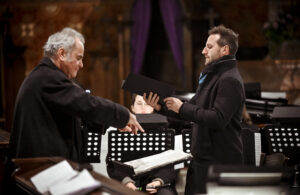
Martinů’s Field Mass at the Basilica of the Assumption of the Blessed Virgin Mary (Tomáš Krejčí and Tadeáš Hoza). Photo: Marek Olbrzymek
And then understand that all of the festival concerts – including those seemingly less important – were programmed in a way that would place the patron’s legacy in a broader context. An afternoon with the Brno Contemporary Orchestra, conducted by Pavel Šnajdr, devoted to the music of local composers (primarily those from the generation born in the first decade of independence) made me aware not only of their complicated relationship with Janáček’s legend, but also of their overwhelming influence on the artists of later generations. It is good to know that before Martin Smolka’s 2004 Nagano, a wickedly funny opera about Czech hockey players, came less elaborate but equally brilliant parodies of old musical conventions, like Josef Berg’s absurdist micro-opera Snídaně na hradě Šlankenvaldě, with the composer’s own libretto based on a play by Matěj Kopecký, a famous Czech puppeteer from the late eighteenth and early nineteenth century. Once again I must praise Jan Šťáva, the only singer among the actors in this gem, singing the role of the Villager, which Berg – to enhance the comic effect – composed in the classical Haydn style and to a German text at that.
What turned out to be a magnificent musical lecture on the diversity of approaches to arrangements of folk music in song was a recital by the soprano Simona Šaturová accompanied by Marek Kozák at the piano – in the Tugendhat Villa designed by Mies van der Rohe, a dream venue for a performance of works by modernists (in addition to Janáček, Eugen Suchon, Béla Bartók and Klement Slavický, among others). I am glad I went to the Reduta Theatre for a staged concert of folk music from the Moravian-Slovakian borderlands – performed by instrumentalists and singers from Březová, Strání and Lopeník, with commentary in the form of essays by Janáček read by Vladimír Doskočil, an actor born in those parts. In fact, the only item on the programme that did not quite fit in for me with the perfectly thought-out concept of the festival was a recital by the bass-baritone Adam Plachetka and David Švec (piano), promoting their album Evening Songs for the Pentatone label. The songs by Smetana, Dvořák, Suk and Fibich to poems from Vítězslav Hálek’s collection Večerní písně, included in the album, were supplemented by the artists with Dvořák’s Gypsy Melodies, Op. 55, and – pushing it somewhat – a selection from Janáček’s cycle On an Overgrown Path. This, however, is a minor complaint. I was more worried by the fact that both artists failed to grasp the intimate acoustics of the Mahen Theatre and performed the whole thing in a manner more suited to, I would say, a concert or opera: Plachetka with the full volume of his healthy and booming voice, Švec on the piano with the lid open. I left after their recital deafened by the excess of sound, but I fully understand the enthusiasm of the audience, who rarely has an opportunity to see in Brno one of the most highly regarded and internationally recognised Czech singers.
However, in the context of everything I heard and saw over just four days of the Biennial, it would be inappropriate to complain. I am already looking forward to another festival. And I still can’t believe that so much was packed into this joyful, unassuming event without generating a sense of overkill.
Translated by: Anna Kijak

